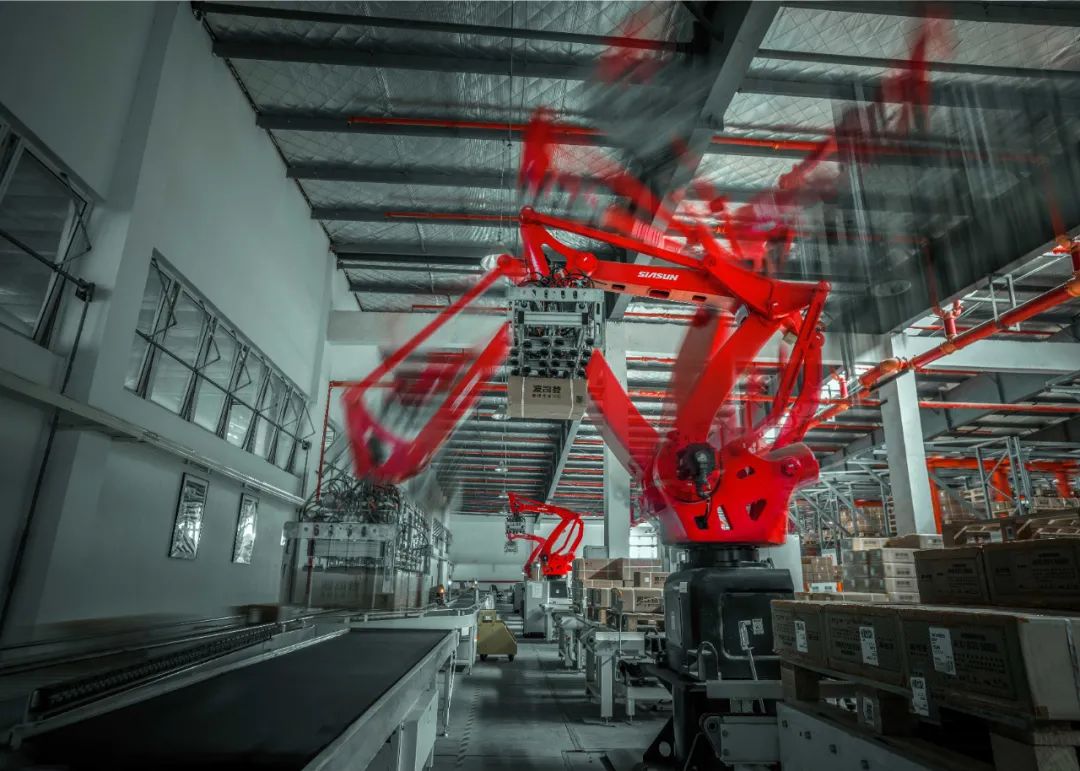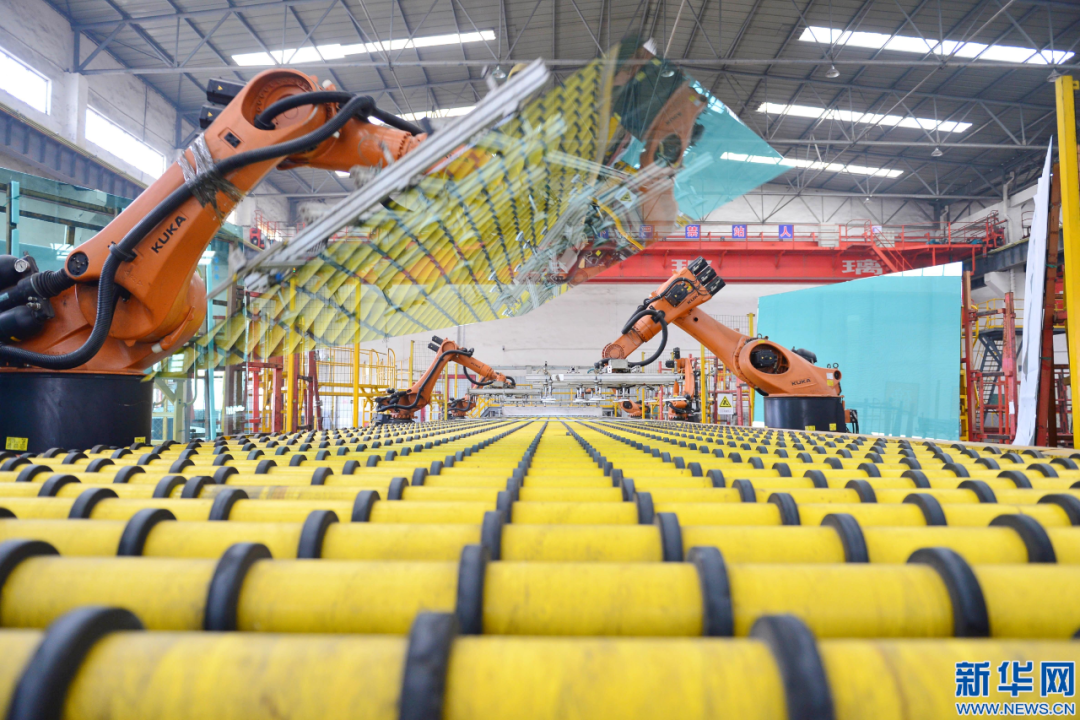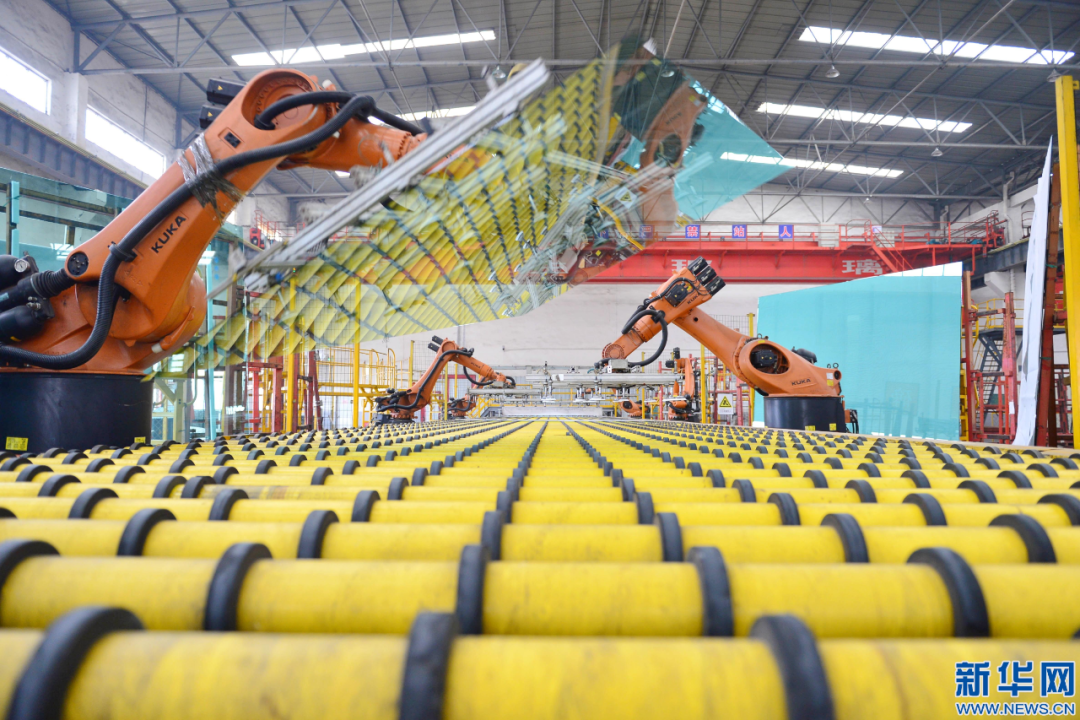How to solve the pain points of the transformation and upgrade of the manufacturing industry?
Author:China Newspaper Time:2022.06.17

△ Anhui Quanchai Power Co., Ltd. industrial robots work on the assembly line. (Photo by Cao Li, a reporter from Xinhua News Agency)
The manufacturing industry is the foundation of the country and the foundation of a strong country. From 2012 to 2021, my country's manufacturing added value increased from 1.698 trillion yuan to 31.4 trillion yuan; the added value of the manufacturing industry has ranked first in the world for 12 consecutive years. my country's industry has 41 large categories, 207 medium categories, and 666 small categories. It is the only country in the world that has all industrial categories listed in the United Nations industrial classification. More than 220 industrial products are the first in the world.
During the "Fourteenth Five -Year Plan" period, it was an important stage of building a strong country, building a modern industrial system, and realizing high -quality economic development. However, since this year, due to the repeated epidemic, the manufacturing industry has encountered great development difficulties. At the same time, the manufacturing plant has shifted to Southeast Asian countries, which has also attracted attention from all walks of life. "It is the key to having core competitiveness. China's manufacturing industry is undergoing transformation and upgrading. It is necessary to consolidate the industrial foundation of trade development, increase technological content and brand content, and form industrial clusters." Said Bai Ming, deputy director of the International Market Research Institute of the Ministry of Commerce.
There are many pain points for transformation and upgrading


△ The intelligent distribution center built by Bosideng can reach 1 million daily throughput.
The international competitiveness of China's manufacturing industry has been reflected in the cost advantage for a long time, but as the demographic dividend disappears and trade frictions have become the norm, the cost advantage of China's manufacturing industry is unsustainable. To maintain or continue to improve international competitiveness, It must be exerted in innovation.
In recent years, the innovation capabilities of Chinese manufacturing companies have continued to increase. The overall innovation investment and innovation output of manufacturing enterprises are growing rapidly, innovative collaborative capabilities have continued to improve, and innovative performance continues to improve. However, it is not necessary to ignore that there are also many pain points and challenges in the process of transformation and upgrading.
"In the context of the digital economy, the intelligent transformation and digital transformation of traditional manufacturing are inevitable." Gao Dekang, the founder of Boshi, the chairman and president of Bosideng Group, said in an interview with the reporter of the China Report, " As a traditional manufacturing industry in my country, how the textile and apparel industry has achieved upgrading and development through digital and intelligentization has always been a problem for the focus of industrial development. Especially in the context of the gradual weakening of the low cost advantage of my country's manufacturing industry, digital and intelligent transformations have also become become. Improvement of the competitiveness of the textile and apparel industry. "
However, transformation is not easy. Bosideng, who has been exploring the digitalization and intelligent transformation of full links since 2014, has encountered some problems along the way. "As a traditional textile and apparel company, the team's overall understanding of digitalization is very different from companies in emerging industries; digital construction costs are high and systematically determined to be determined. They also need to invest a lot of resources and time. In addition, this work needs to cross the department, cross the organization boundary, and collaborate with the integration of resources, and require the company to promote the change of organizational change. In this digital change, it is very important for enterprises to embrace changes firmly, "Gao Dekang said.
Not only the traditional textile and clothing industry, as the world's largest steel country, the same is true of the steel industry in the process of transformation and upgrading. "In recent years, my country's steel industry has developed at a high speed, and steel production and consumption have been rising, but there are still many development problems." Wang Xinjiang, executive deputy secretary -general of the Chinese Metal Society, told the reporter of the China Report that the steel industry is facing imperfect industrial system, The industrial chain is incomplete; the concentration is not high enough, and the layout is not reasonable; the key technologies and core basic components in the field of intelligent manufacturing still rely on imports; the development of innovative research and development systems mainly based on production, research and research is imbalanced.
"Overall, my country's manufacturing industry is facing a" big but not strong "situation." In the interview, many people in the industry told the "China Report" reporter that "the manufacturing industry is facing core technology lack, the quality of development is not high, the added value is added, the added value is worthy Low and low profits; the industrial clusters are scattered, and the competition between regions has promoted the development of the manufacturing industry within a certain period of time, but now there is a negative effect, such as the disorderly competition formed in the investment promotion. At the same time, the Chinese manufacturing industry At present, it is still being affected by 'splint gas', and the high -end manufacturing industry returns to Europe and the United States. Low -end manufacturing is favored in Southeast Asia. "
According to Zhang Youming, the general manager of the Internet of Weiyou Jingzhi Industry, my country's manufacturing industry mainly faces four major pain points in the transformation and upgrading. The first is the lack of talents. The transformation and upgrading of the manufacturing industry needs to absorb strategic, leading talents, and composite and innovative talents. At present, they are facing a situation of insufficient talent attractiveness. Second, the cost of personnel is too high, and the profit increase of most manufacturing companies is declining, but the cost of personnel has been rising. The third is the lack of core technology. On the one hand, some companies are unable to innovate, and they cannot recruit high -end technical talents. On the other hand, enterprises have more concerns about innovation. One is that there is no necessity in worrying about innovation investment. The fourth is the lack of security. Under the current international situation, the introduction of technology, equipment, software, etc. from abroad has uncertainty and instability.
Multi -measure cracked pain points


△ A glass production enterprise automated production line in Shahe City.
How can I solve the many pain points in the process of transformation and upgrading?
Under the development of digital technologies such as 5G, cloud computing, and the Internet of Things, enterprises have more or less entered the stage of digital and intelligent. Gao Dekang took the clothing industry as an example. In digital transformation, many clothing companies are not clear about the strategic planning of the transformation or the strategic development is not synchronized. The correlation between the two has not been established, resulting in the digital transformation of enterprises that difficult to drive business development. "In fact, the digital ability of the enterprise is both technical ability and business operation capabilities. It must achieve a high degree of integration of technology and business, and truly turning digital technology into a new strategic advantage of enterprises to compete in order to achieve better results." Say. Wang Xinjiang pointed out that at present, the key technologies and core basic components in the field of intelligent manufacturing in my country still rely on imports. They must establish an enterprise -centric digital system R & D system. At the same time, we must strengthen frontier technology research, realize technological independence and self -reliance, and improve the level of domesticization. In addition, standardization must be strengthened to play a standard leading role.
"Cracking the pain points requires the simultaneous efforts of the government and the enterprise." Zhang Youming told the reporter of the "China Report" that the government must first solve the problem of people, strengthen the cultivation and cultivation of talents, and introduce relevant policies according to local conditions; second, strengthen intellectual property protection, and strengthen the protection of intellectual property rights. Intellectual property protection is not just a paper document, it must be implemented from all aspects; third, increase the tax refund fee for R & D investment; fourth, the aerospace industry should be learned in key technical systems, and technological research through the national system should be carried out; fifth , Strengthen the construction of a unified unified market in the country, solve the competition problems between regions and the market issues of key technology research and development; sixth, enterprises must grasp the direction of digitalization, networking, and intelligence, and vigorously promote intelligent production. Actively develop new technologies, do not do nature competition, and have core technologies.
From the perspective of Li Yizhong, president of the China Industry Economic Federation, the transformation and upgrading of the manufacturing industry should increase investment and investment, and promote the combination of "industry, research, research and use"; vigorously develop the digital economy, promote the in -depth cross -border integration of new generation of information technology and industrial manufacturing industry At the same time, we must play the key role of effective investment, make up for shortcomings, strong weaknesses, and structures. Whether it is to optimize the stocks for greening, intelligent, and high -end technology transformation, or developing high -tech industries and emerging industries, it is developed. Both need to invest in support. In addition, we must continuously improve the business environment, implement larger tax reduction and fees, further stimulate the vitality of state -owned enterprises, and support the policy of supporting private enterprises.
Helping the "double carbon" technology upgrade is the key
△ Workers are processing machines for parts.


Green and low -carbon have become the basic guidance principles and important evaluation criteria for the transformation of China's economy, society, and ecological development. Among them, the carbon emission reduction of the manufacturing industry is the top priority of carbon peak carbon neutrality and target. In the eyes of many industry insiders, for China, energy conservation and emission reduction are the means of "Dafeng". Energy replacement is a "neutralization" path, and technological upgrade is the key to the achievement of the "double carbon" goal.
"Enterprises of high energy consumption, high pollution, high -emissions industry and low -end manufacturing (that is, 'Sanxia and One Low') enterprises should choose intelligent production equipment when updating equipment." Talking about how the manufacturing industry helps "double carbon" when the manufacturing industry helps "double carbon" Zhang Youming said that from the perspective of production, manufacturing companies should undergo changes in production methods, connect various production factors through intelligent systems, open up the industrial chain, and realize the intelligent scheduling of resources, thereby reducing waste. In addition, the circular economy should be actively developed, and the manufacturing production should be included in the overall framework of the circular economy, which reduces the demand for energy and resources to the greatest extent.
The steel industry is China's second largest carbon emission industry. Promoting the transformation and upgrading of the steel industry and energy saving carbon reduction will be an important path to achieve "carbon neutrality". In this regard, Wang Xinjiang said that it should further attach importance to the high -quality development of the steel industry and promote the use of new green low -carbon technology. It can list practical technology as a list to help enterprises promote cutting -edge technology The intensity "dual control"; promoting the integration of "two modernizations" and intelligent manufacturing to make the production efficiency of the steel industry more efficient; improve the carbon trading market, build a low -carbon control and evaluation platform for the whole process of steel, and realize the intelligent management of carbon emission information of enterprises ; Enterprises should optimize the product structure and pay attention to brand building.
"To achieve the" dual carbon "goal of China's manufacturing industry, it is necessary to speed up the establishment of an independent and controllable green low -carbon technology innovation system." Xiao Guiyu, deputy director of the Standing Committee of the Shanghai People's Congress, pointed out that raw materials that serve the low -carbon transformation and upgrading of the manufacturing industry/ The three core goals of fuel substitution, process technology improvement and carbon capture and use of the three core goals must accelerate the development of key low -carbon technology such as industrial energy conservation, hydrogen energy preparation and storage and transportation, zero carbon power, industrial process optimization, carbon capture and carbon exchange, to satisfy Carbon reduction needs to be reduced in specific industries and key links; focusing on clean energy, use of residual heat, steps, high -efficiency motors, frequency conversion speed regulation, high -efficiency insulation, lithium battery energy storage and other fields. Low -carbon co -technical research meets the technology supply needs of energy -saving and carbon reduction in the entire and long -term manufacturing industries. In addition, the transfer and transformation of the results of low -carbon technology innovation must be accelerated.
Text | "China Report" reporter Zhang Lijuan
- END -
Henan: Zhoukou Customs launched 16 measures to promote the quality of foreign trade to keep the quality
Zhoukou Daily · Zhou Dao client reporter Wang Quanlin correspondent Yang BeibeiIn order to resolutely implement the decision -making and deployment of the Party Central Committee and the State Counci
Heze Development Zone: Investment promotion is high -quality development accumulation capacity

In 2021, the municipal development zone was raised from 23 in 2020 to 19 in the c...